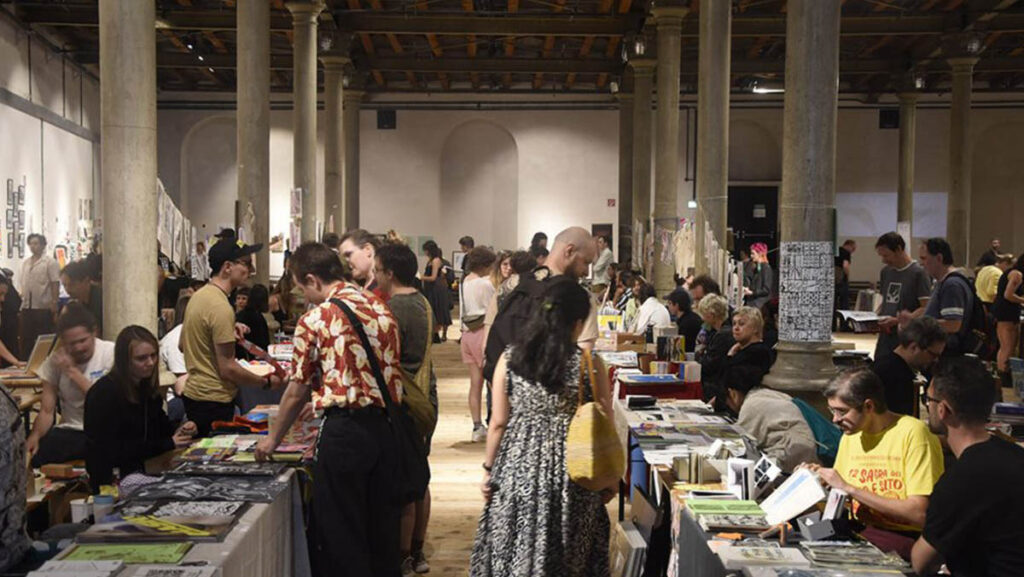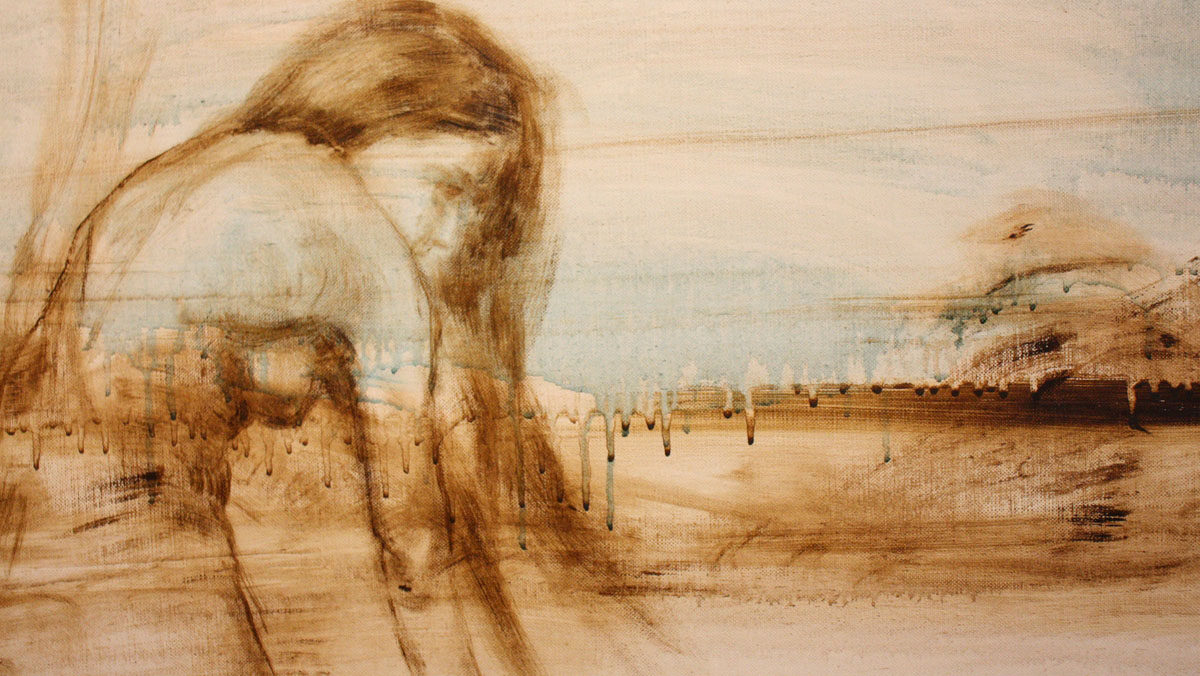
When I ask her whether she ever returns to her older works, Filomena says: “Once a work is over, I stop considering it for the time being, not because it’s not of my interest anymore, but because I’m much more into that which has yet to come into being.” The artist makes in-depth studies of lonely women from different centuries, from the 1800s to the 1900s. Painting these women today means abstracting them within a historical context closer to the artist.
Erka Shalari: First, I would like you to tell us something about yourself and the magic of your native city.
Elisa Filomena: I was born in Turin, where I live and work. I attended the Turin Academy of Fine Arts and graduated in Painting in 2002. Those years have been marvellous and full of magic, the latter of which is also one of the main features of Turin, usually considered a mysterious and somewhat hidden city. There are some significant places throughout Turin and its surroundings, such as the banks of River Po, the Amoretti Library gardens and the Leumann village, which actually is a late 1800s working-class district on the outskirts of Turin.
What are your thoughts on contemporary painting in Italy? There’s a lot of buzz about it, with some indicating the dawn of a new artistic style.
I believe that contemporary painting in Italy is experiencing a very flourishing moment and there are many painters I admire. Their ways of enquiring and researching are deeply rooted into Italian culture but, at the same time, they are developing towards a more international perspective. There is a classicism that is being both reinterpreted and rediscovered, by each in his way and style.
It is as if history had left traces of all that happened and is now coming to light in its ancient and current splendour.”
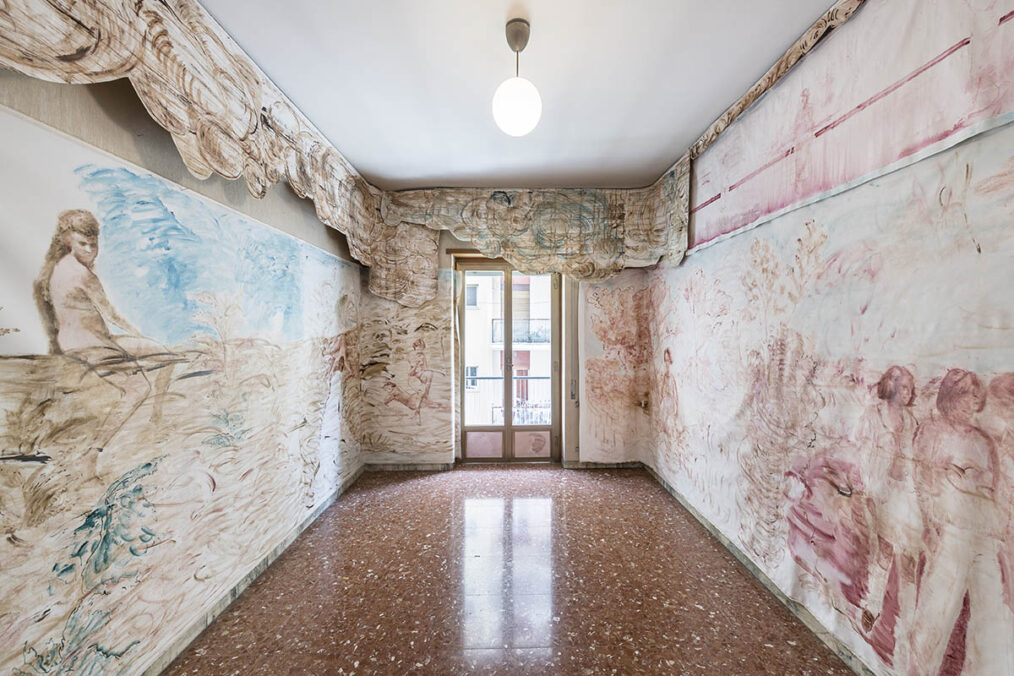
Is Simposio Lac o Le Mon an event where these painters meet? You have been part of it, how is the Symposium organized?
I had the honour of taking part in the last two editions of the Simposio di Pittura, a unique opportunity of its kind for the artists, who are invited to share and live together throughout the residency, which lasts about 20 days. Conceived and organised by Luigi Presicce, the Painting Symposium is being hosted every year by the Lac o Le Mon Foundation in San Cesario di Lecce (in the south-east of Italy) inside a late 1800s delightful farmhouse, within a large park teeming with historic vegetation typical of the astonishing Apulian territory. This brief description already sums up both the ancestrality and radicality of this event.
Those are worthy days, marked by timelessness as well as by a creative and sacred rhythm. A great sense of friendliness among the resident artists can be experienced, exchanging instances of daily life, working rhythms, intimacy and profound bonds. It is an enchanting experience that deeply marks those lucky enough to be there and it may also be considered a chance for discussion, by the custom of meeting other artists within the residency every single day and by being able to show them your own portfolio. This is one of the key points of the Symposium in which exchanging ideas among the fellow artists becomes the subject of specific topics on one’s artistic research.
You have created numerous self-portraits throughout the years Elisa. When do you actively choose to undertake the depiction of a self-portrait? How does that inspiration or feeling typically strike you?
The self-portraits belong to a period of many years ago and they were part of me, and yet I consider them as a sort of alter ego of my own being, the former of which have been more than just a mirror, as they were the very truth regarding my being and existence, something that not even I was aware of. I oftenly used to portray my own features due to the fact that I would take pictures of what I was interested in painting and therefore it was highly practical to have myself available to do with as I pleased, without asking anyone for anything.
More than 10 years have passed since the last self-portraits were made, although I keep on painting and drawing on a nightly basis. I draw inspiration from pictures ranging from mid-1800s up to mid-1900s, as I prefer to abstract the figure from a historic context close to me. Over time, I felt that I was no longer interested in depicting a certain individual but any woman or man without a specific identity or feature, as to let the viewer freely mirror itself into it.
My feeling has probably not changed over the years, as I have never been interested in painting myself, but a woman, whichever that may be.
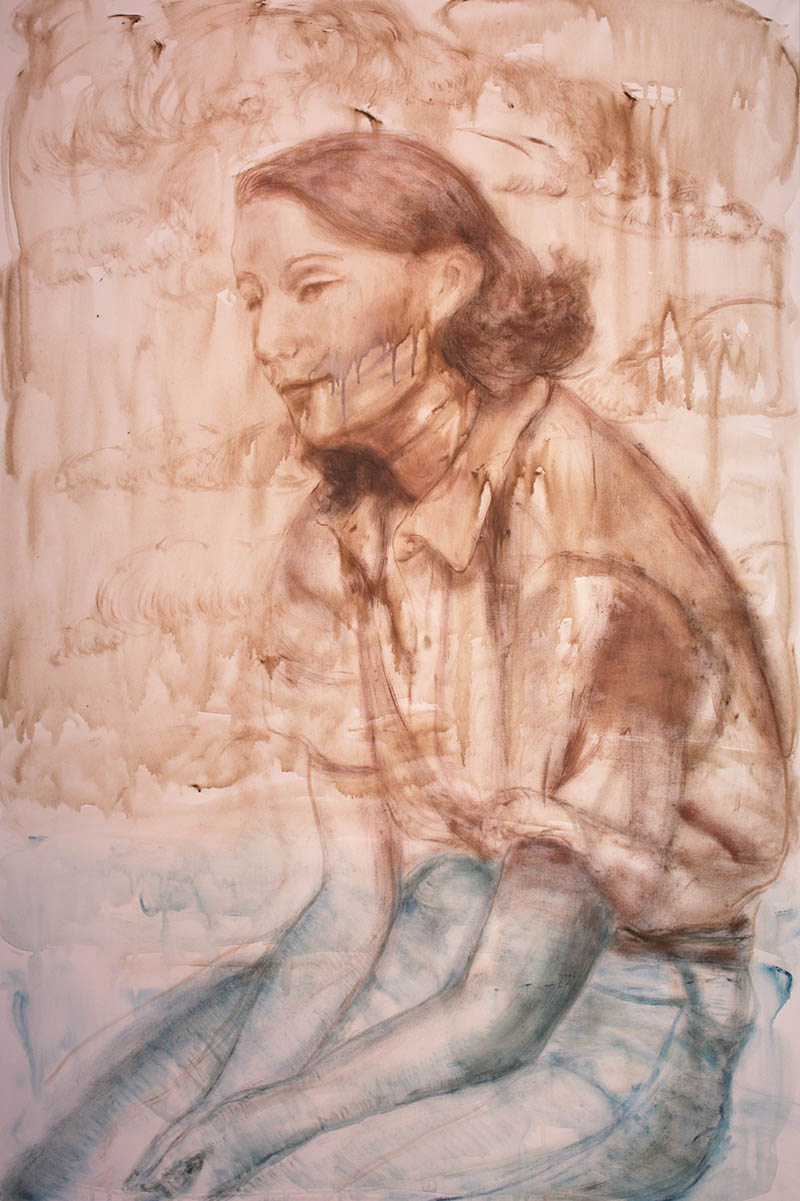
That’s because I’m interested in the human condition, in existentialism, in seeking philosophical fulfilment, that is to say an emotional way thanks to which the human being would let itself get carried away, in feeling that through painting an uncanny and profound message, a truth, can be conveyed. Painting is, by its own nature, truthful, more than anything, so my relationship with it is deeply rooted into the innermost essence of being. There is an eerie element to all of this, in that I understand rather well the nature of painting but not its ways. How it operates and structures itself remains a mystery.
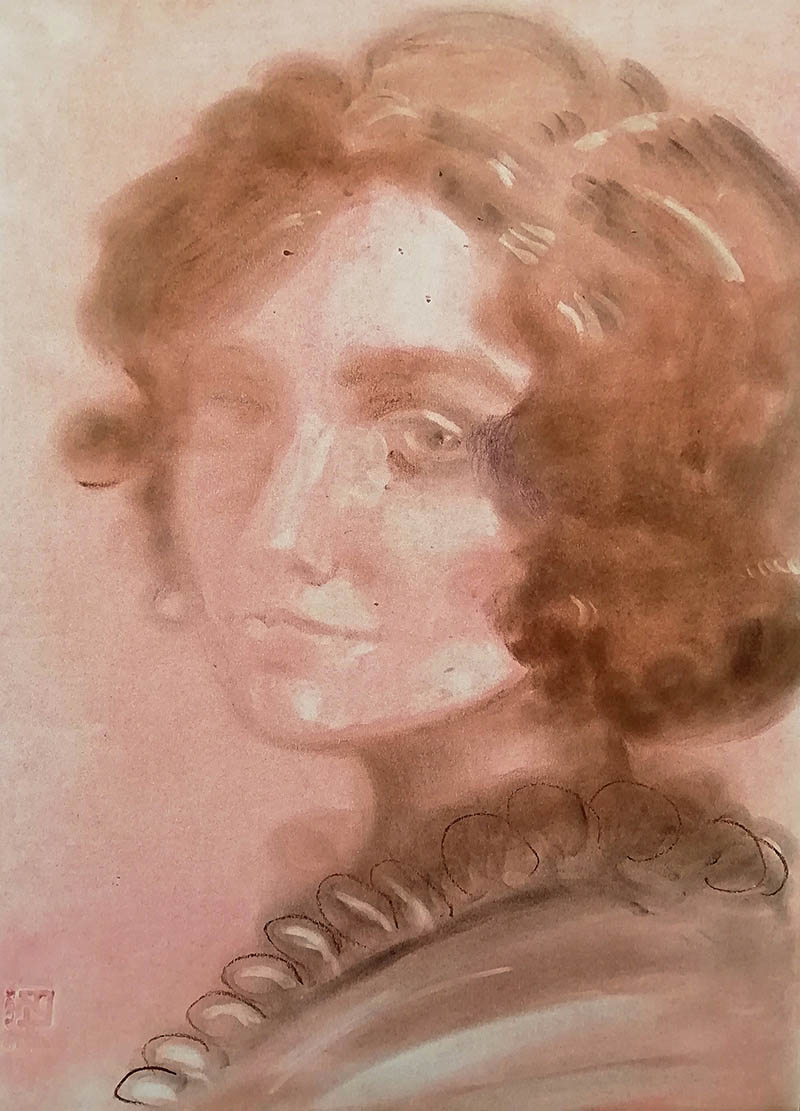
How do your paintings come to life, and how has it been to work with live models in the past?
My work is submerged in a stream of consciousness that drags and gratifies my being. It’s been many years that I’ve been painting and I’ve gone through several stages in my research: the very relationship with painting, testing myself, the study, excitement, deliverance, failure and unavoidable stalling. Now, after all these steps that I reckon to be preparatory and that have lasted around 20 years, I feel as if there is no difference whether I paint or not, inasmuch as my mind goes on painting unceasingly. There is, though, a physiological difference, in that when time passes by without actually painting, it is as if I stop living and feeling anymore.
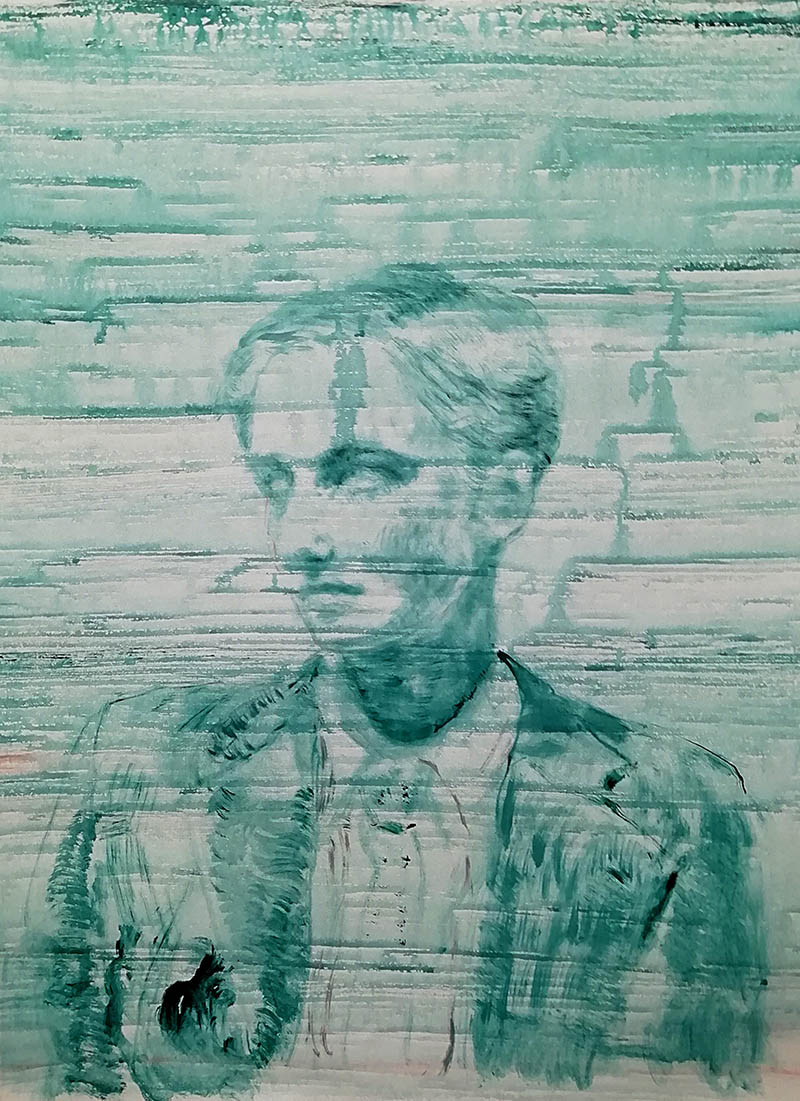
By gradually resuming the act of drawing or painting, everything comes back to life. Back in the days, I started by painting real-life models or acquaintances and for many years I kept on using this approach, as it was necessary to truly learn the rules and principles of drawing and painting. The depiction of reality is much more difficult to render through a work than by using a photography and this method was the one taught by several professors at the Academy and Art Institutes. The colours and shades that changed according to the light just as the three-dimensionality of the subject are all elements that have to be processed from the beginning to fully comprehend and handle the painting medium along with the tools available. Following this initial period, I abandoned this approach only to use it again on just a few occasions. After several years of in-depth work, painting gets in your blood and becomes one with you, making any random item worthy of being depicted.
Currently, I use photography mainly as a starting point, but it’s all an abstraction of the thought and gesture, as the very act of painting constantly finds its way to be revealed.
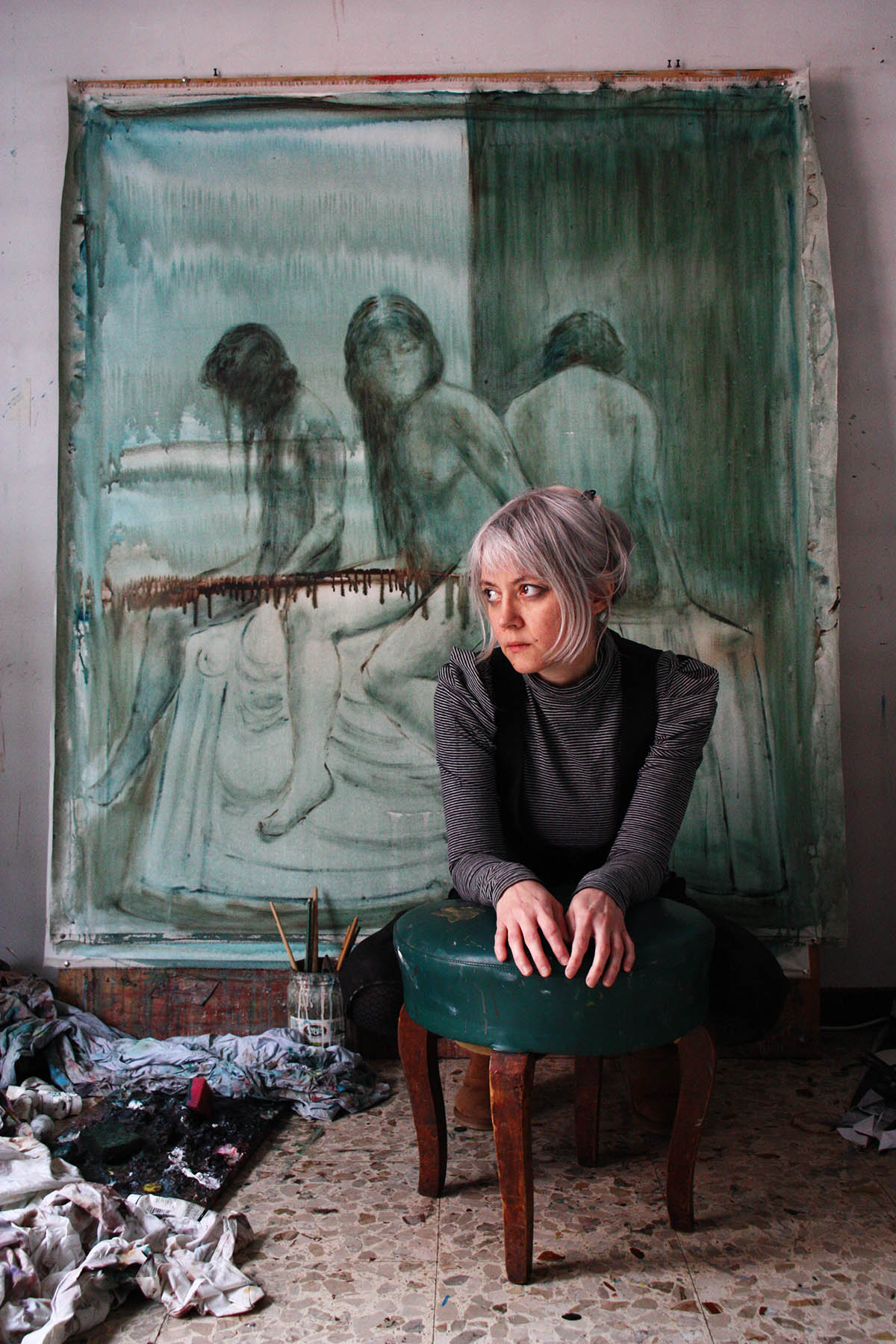
How do you employ the latter?
These pictures are used as a starting point for an internalization of the subject and can be considered as found imagery, from both photography books as well as from all over the web. They are being subsequently sorted and archived depending on the stages of life I’m passing through, which I entitle with symbolic names to mark the different levels of thought.
What are your feelings when revisiting works done in the past? How does the element of time influence and shape your perspective on your drawings and paintings?
Once a work is over, I stop considering it for the time being, not because it’s not of my interest anymore, but because I’m much more into that which has yet to come into being. Only after several years have passed I tend to look over the works done and reconsider them. I’m currently dealing with my ever-growing archive, as it is a substantial work to carry on both physically as well as mentally, especially if you consider the amount of work produced in nearly 30 years.
By sorting them chronologically every year, after a considerable period since their production, it made me realise even more the significant amount of work painting requires. Work meant unwearying practice, but even more as research, experimentation and in-depth study.
How is an ideal day of yours?
Since I paint during the night-time, my day actually starts in the late morning with a long, triple cup of coffee. Only afterwards, did I pursue all that enthralls me: cinema, poetry and reading biographies. It can be a rather good way to start the day by absorbing new energies and cues for the following nightly work. I love aperitif time as it is a sort of relaxing and soothing break that sets the daily rhythm. Right after dinner, I commence working. Depending on the impulse of the moment, I turn to either drawing or painting and proceed until I start hearing the birds singing around 3 or 4 in the morning. A bit more painting, a cigarette and then I go to rest.
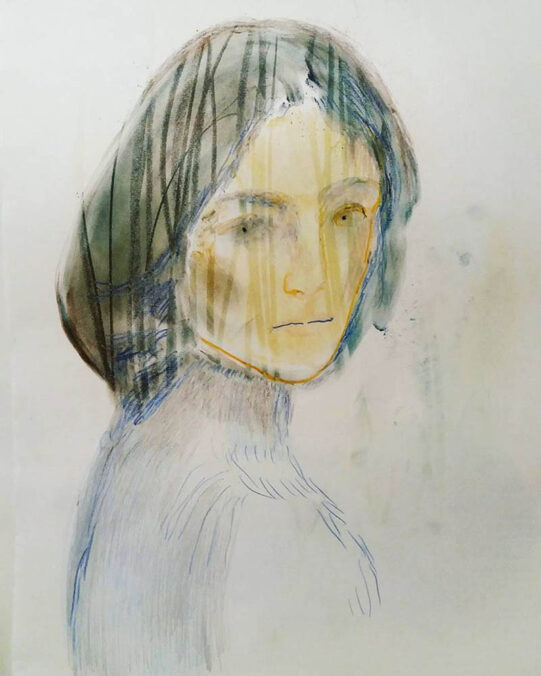
A sentence that an art critic has been saying about your work, something that has deeply influenced you?
There was a major group exhibition last year in a marvellous Umbrian town called Todi, hosted by the Giampaolo Abbondio Gallery. It was named Hauntology – La natura spettrale della pittura [The spectral nature of painting] and curated by Ivan Quaroni, whose review essay embodies a profound and meaningful analysis of my painting, that I completely agree with and of which I’m honoured by, stating that: “Elisa Filomena’s paintings look like surfaces washed away by time, inhabited by ghostly figures of uncertain consistency. These subtle, almost filigree-like figures are perhaps the best visual transcription of the fragmentary nature of memories. Indeed, like memories they have an incomplete, corrupted form and an arbitrary character stemming from the artist’s desire to capture the impalpable, essential quality of images. (…)” (2)
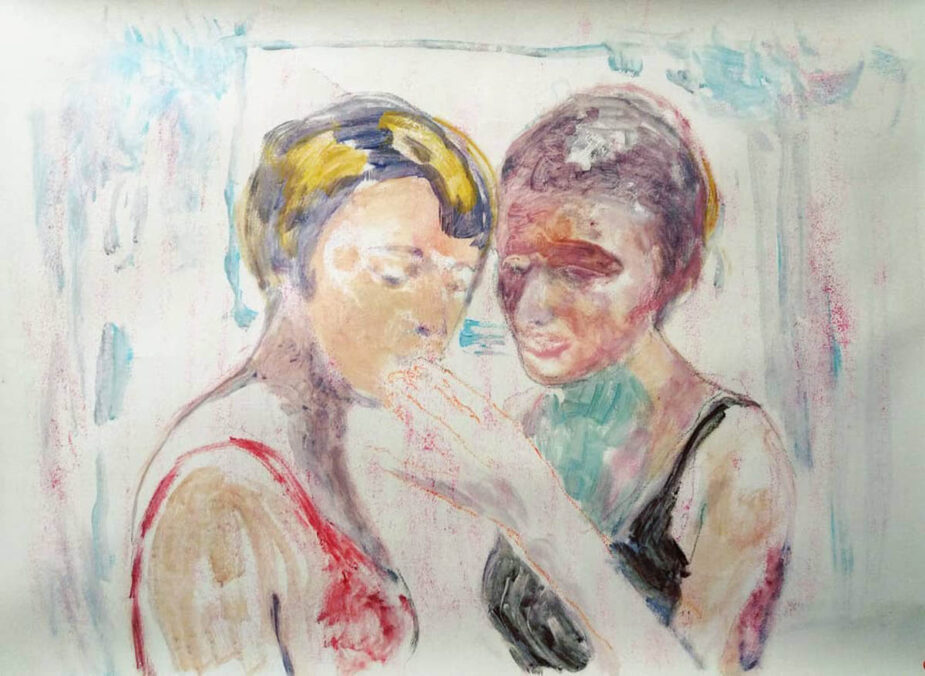
Can you tell us something about what you are working on at the moment?
I’m working on drawings and paintings that alternate each other: Crayon drawings depicting mainly female figures alternating with larger canvases wherein the human figure belongs to the background, while leaving space for a broader environment. These are two different focuses on the nature of human existence, an in-depth research done through drawing and a more extensive one through painting. As for the exhibiting aspect, the first event of this year, in January, has been a digital solo exhibition part of a project conceived and curated by Caroline Corbetta for the Crepaccio Instagram Show, and in the meanwhile, I won the 2nd prize of the 13th edition of the Prisma Art Prize. In February, the group exhibition entitled Multa Facies – Indagini sul volto – la gipsoteca di Antonietta Raphaël & le opere su carta di Mancini, Viani, Ziveri, de Canino, Fanelli e Filomena has been inaugurated in Rome, hosted by the Simone Aleandri Arte Moderna Gallery. This exhibition encompasses about 100 years of research inquiring the human countenance and it has profoundly touched me as I have been placed side by side to some true Painting legends. March has seen the launch of the Endeavour catalogue of the eponymous solo exhibition hosted last year by the Hyperbien Gallery in Montreuil (Paris) and curated by Sophie Toulouse. This overall project has been entirely funded by the grant I received from the NYC-based Pollock-Krasner Foundation. During the same month, I have also taken part in the Le Luxe I – Hommage à Matisse group exhibition hosted by the same venue. Several other upcoming exhibitions and events are being scheduled for this year’s time frame, but they have yet to be fully defined.
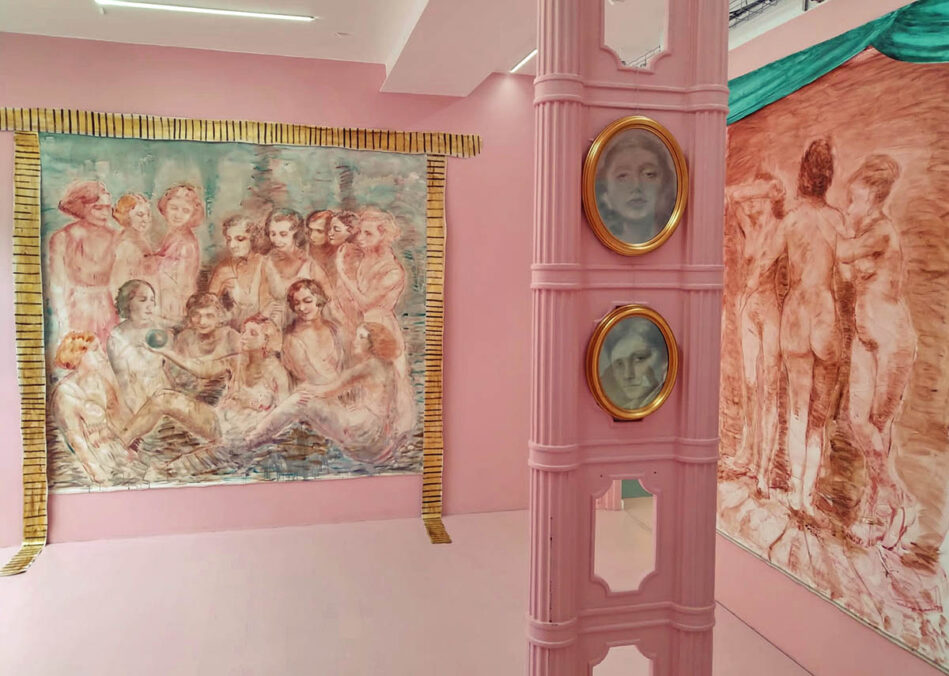
What do you wish for 2024?
My wish is that Painting may lead me towards a state of deepening and implementation of all that I have still to convey. Revealing the quenchless history of the Italian art is something that I have grasped since I was young and to which I yearn just as in bringing into life that which is truly genuine, thanks to what I have experienced so far. I put my will into it and Painting will decide the way forward.
Elisa Filomena – www.elisafilomena.com/
Notes:
(1) La camera delle solitarie, Flashback Habitat, Turin. Part of a site specific experimentation set around the Le Solitarie (1923) 100yr old work of Mario Sironi, within the Sironi, disegnatore furioso – Opere e cenacoli 1901-1961 exhibition, curated by Simone Aleandri.
(2) Ivan Quaroni, review essay excerpt from the Hauntology – La natura spettrale della pittura exhibition catalogue, Vanillaedizioni, Albissola Marina (IT), 2023, of the eponymous exhibition, curated by Ivan Quaroni and hosted by the Giampaolo Abbondio Gallery in Todi (IT) last year. Translation courtesy of the monographic book entitled Elisa Filomena. Un atto creativo / A Creative Act, Magonza, Arezzo (IT), 2023, curated by Liletta Fornasari.
About the writer: Erka Shalari is an art writer and editor. Her work is committed to uncovering distinctive artistic positions in contemporary art. The work methodology is strongly influenced by psychology, epistemological works, as well as affects and rituals. The individuals following each interview are intertwined with a file rouge not only with the writer but also with one another, creating so curated series and episodes. In 2023, she established her writing studio Vera Frontfrau, offering writing expertise to artists, galleries and art foundations.




